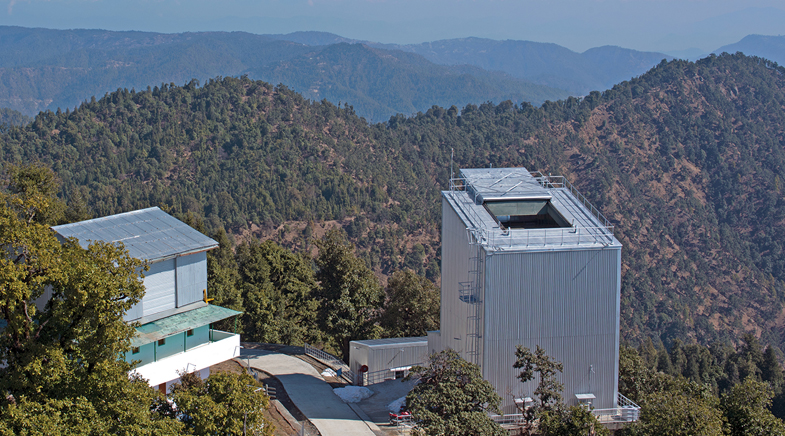Gravity meets quantum
-
- from Shaastra :: vol 03 issue 06 :: Jul 2024

Researchers observe the effect of gravity in the quantum realm with high precision.
For a century, physicists have been searching for a unified theory that explains everything in the universe and have failed to unify two major theories—Einstein's relativity and quantum mechanics. Relativity explains gravity and the motion of visible objects, while quantum mechanics delves into the behaviour of fundamental particles.
Recently, a team of quantum physicists from the University of Vienna, led by Philip Walther, performed an experiment showing how gravity affects the quantum world (bit.ly/Quantum-gravity). They have measured the effect of Earth's rotation on a pair of entangled light particles (photons). Quantum entanglement is a strange phenomenon where two particles stay linked even if they are on opposite sides of the universe.
Gravity is a weak force and it becomes weakest in the realm of smaller particles. To measure the effect of gravity in the quantum range required a high-precision, sensitive instrument. Researchers took five years to plan the experiment and build the super-sensitive machine to capture the feeble effect of gravity on quantum particles. The Vienna group collaborated with researchers from the Massachusetts Institute of Technology to construct a large Sagnac interferometer. Named after the French physicist Georges Sagnac, this device has been used for a long time to measure the Earth's rotation by utilising the principles of light interference. The only difference is that the Walther group used a pair of entangled laser beams instead of two separate laser beams.
Gravity is a weak force and it becomes weakest in the realm of smaller particles.
Researchers aligned the interferometer with the Earth's axis to maximise the effect of the Earth's rotation. They created two entangled photon beams that travel opposite to each other within a closed path. Two entangled photon pairs then travelled through two kilometres of optical fibre coils within the interferometer before reaching their meeting point. After two years of observation, researchers found that there is a difference between the beam that runs along the direction of the Earth's spin and the beam running opposite to the Earth's spin. Researchers call this a phase shift. Since nothing can exceed the speed of light, the photons' speed does not combine with the Earth's rotational speed. Walther explains that the photon moving with the Earth's spin exhibits a phase shift or change in colour compared to the photon moving against the Earth's spin.
“This proof-of-principle experiment is likely to impact precision measurements, signal reconstruction, and atomic clocks," says Raktim Haldar of Leibniz University Hannover, Germany.
See also:
Have a
story idea?
Tell us.
Do you have a recent research paper or an idea for a science/technology-themed article that you'd like to tell us about?
GET IN TOUCH














